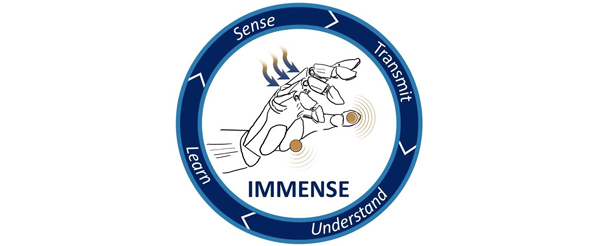IMMENSE explores how materials can be made to sense, learn, and adapt—merging mechanics, physics, and computing to create sentient structures that communicate and respond intelligently to their environment
Forests, insect swarms, and bones during remodelling are striking examples of biological systems whose elements possess the ability to sense and exchange signals. These signals are exploited to adapt to evolving environmental conditions and to learn how to improve performance, in some cases without a centralized control.
IMMENSE project
Can materials and structures be enabled with the same capabilities? How can we build devices that exchange information on a mechanistic base and exploit that to learn how to optimally react to external stimuli? To what extent can materials and structures be endowed with active inference processes which mimic brain activities?
Finding answers to these questions is the challenge of IMMENSE, with the overarching aim to create materials and structures able to sense, exchange signals, interpret and compare them, thus achieving self-learning and self-adaptation. This will be a major step toward the design of sentient materials and structures.
Scientific approach
Solid and structural mechanics, solid-fluid interaction, smart architected metamaterials, coupled with multi-physics phenomena at micro and macro scales, will be combined to implement sensing and signal control abilities on mechanistic bases.
Complex dynamic responses of oscillator arrays, coupled with physical “in materia” computing replicating classification and learning processes, will be innovative tools designed to implement learning and reacting abilities.
Experiments will be performed at micro and meso scales on “ad hoc” designed proof of principles prototypes, to obtain evidence of sentient materials and structures.
IMMENSE will set the stage for a new class of materials and structures implemented with local, decentralized sensing, monitoring and reacting abilities and will open to a variety of new applications, including local self-healing of construction materials and biomedical prosthesis, new monitoring and control of industrial appliances, advanced unmanned vehicles and satellites.


